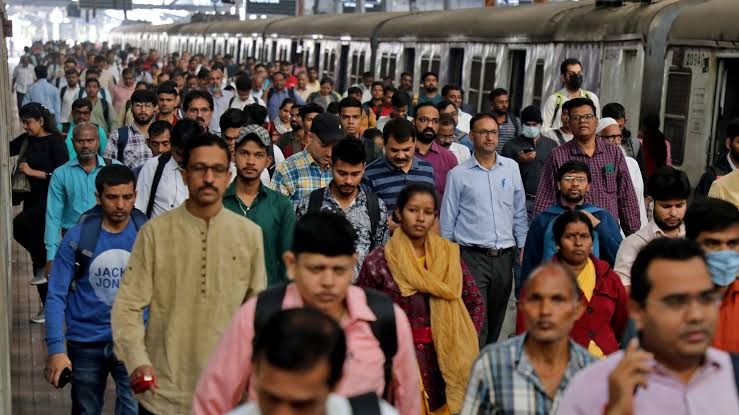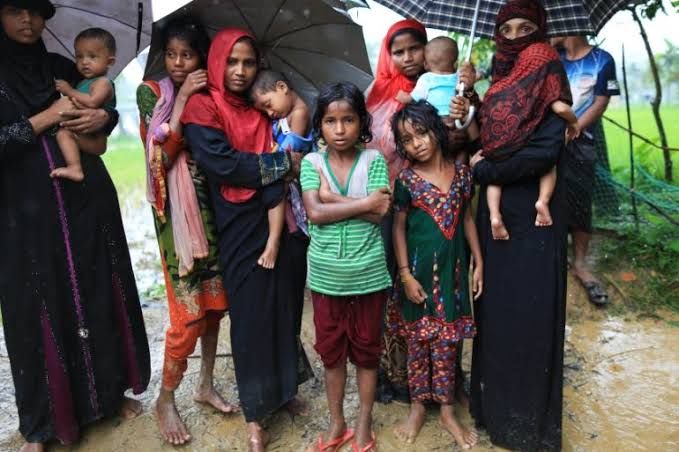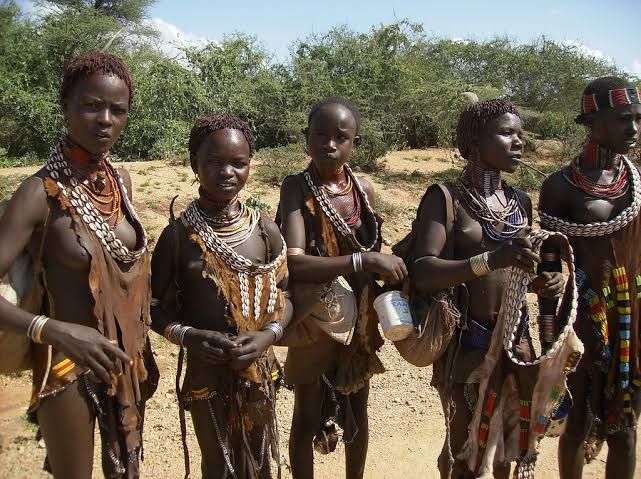As of April 2025, the global population continues its upward trajectory, with a handful of nations contributing significantly to this number. These demographic giants, spread across various continents, shape not only their own socio-economic landscapes but also exert considerable influence on the world stage. Their sheer size presents unique opportunities and challenges, impacting everything from resource allocation and economic growth to cultural trends and political dynamics. Understanding the hierarchy of these populous nations offers a crucial lens through which to view global trends and future prospects.These demographic titans, while diverse in their cultures and economies, often grapple with similar challenges stemming from their large populations. Rapid urbanization can strain infrastructure, leading to housing shortages, inadequate sanitation, and increased traffic congestion. Ensuring access to quality education and healthcare for a burgeoning populace demands significant investment and innovative solutions. Competition for resources, including water, arable land, and energy, can become intense, potentially leading to social and political friction.
These Are The Top 10 List Of The Most populated Countries In The World
1. India
 With an estimated 1.46 billion inhabitants in the year 2025, India will surpass all other countries in terms of population. An estimated 0.89 percent of its population grows each year. With a median age of about 28.8 years and over 37% of the population residing in metropolitan regions, India’s demographic makeup is diversified. India continues to produce enough food to meet its own needs and is a key participant in the international markets for sugar and crude oil, despite its enormous population. After reaching a maximum of 1.65 billion in 2060, its population is predicted to progressively decline. The future of India is being shaped by its young workforce and its rapid development.
With an estimated 1.46 billion inhabitants in the year 2025, India will surpass all other countries in terms of population. An estimated 0.89 percent of its population grows each year. With a median age of about 28.8 years and over 37% of the population residing in metropolitan regions, India’s demographic makeup is diversified. India continues to produce enough food to meet its own needs and is a key participant in the international markets for sugar and crude oil, despite its enormous population. After reaching a maximum of 1.65 billion in 2060, its population is predicted to progressively decline. The future of India is being shaped by its young workforce and its rapid development.
2. China
 About 1.42 billion people will call China home in 2025, making it the most populous country in the world. A sign of demographic trends, its population has declined by 0.23%. A median age of 40.1 years and a population density of 151 people per km² characterize the nation. Nearly two-thirds of China’s population lives in cities. The decline in birth rates and the resulting aging of China’s population are major problems.
About 1.42 billion people will call China home in 2025, making it the most populous country in the world. A sign of demographic trends, its population has declined by 0.23%. A median age of 40.1 years and a population density of 151 people per km² characterize the nation. Nearly two-thirds of China’s population lives in cities. The decline in birth rates and the resulting aging of China’s population are major problems.
3. United States
 The U.S. has roughly 347 million citizens in 2025, with a modest yearly growth rate of 0.54%. Migration and natural rise are the main factors driving its population expansion. Urban areas are home to more than 82% of Americans, and the typical age is 38.5 years. The varied population, thriving economy, and technological innovation of the United States are its most distinctive features. Its almost 9.15 million km² of area is rich with potential and resources. Even if birth rates are falling, the country’s migration rate is still growing steadily, which has a major impact on the demographic landscape. Being a dominant economic and military force, the United States plays a key role globally.
The U.S. has roughly 347 million citizens in 2025, with a modest yearly growth rate of 0.54%. Migration and natural rise are the main factors driving its population expansion. Urban areas are home to more than 82% of Americans, and the typical age is 38.5 years. The varied population, thriving economy, and technological innovation of the United States are its most distinctive features. Its almost 9.15 million km² of area is rich with potential and resources. Even if birth rates are falling, the country’s migration rate is still growing steadily, which has a major impact on the demographic landscape. Being a dominant economic and military force, the United States plays a key role globally.
4. Indonesia
 To the tune of 286 million in 2025, with a yearly growth rate of about 0.79 percent, is Indonesia’s population. With 1.81 million km² of territory, it surpasses all other island nations in terms of size. Nearly 60% of the population lives in cities, and the median age is approximately 30. With 2.1 children per woman, fertility rates are high and driving population expansion. A variety of agricultural, industrial, and service sectors make up Indonesia’s economy. As a major emerging market, it is growing despite difficulties caused by urbanisation. Because of its huge and youthful population, Indonesia has the ability to become a major power in Southeast Asia in the future.
To the tune of 286 million in 2025, with a yearly growth rate of about 0.79 percent, is Indonesia’s population. With 1.81 million km² of territory, it surpasses all other island nations in terms of size. Nearly 60% of the population lives in cities, and the median age is approximately 30. With 2.1 children per woman, fertility rates are high and driving population expansion. A variety of agricultural, industrial, and service sectors make up Indonesia’s economy. As a major emerging market, it is growing despite difficulties caused by urbanisation. Because of its huge and youthful population, Indonesia has the ability to become a major power in Southeast Asia in the future.
5. Pakistan
 The population of Pakistan is growing rapidly, with an estimated 255 million people living there. The yearly growth rate is roughly 1.57%. There are about 331 persons per square kilometer over its approximately 770,880 km². A extremely young population is indicated by the median age of approximately 20.6 years. We are seeing moderate urbanisation, with 34.4% residing in urban areas. Problems with infrastructure, poverty, and overpopulation plague Pakistan. Its fast rate of growth is supported by its fertility rate, which is 3.5 children per woman. Agricultural, industrial, and service industries all play important roles in Pakistan’s economy and geopolitical standing, despite the country’s challenges. Its young population has possibilities for growth as well as threats.
The population of Pakistan is growing rapidly, with an estimated 255 million people living there. The yearly growth rate is roughly 1.57%. There are about 331 persons per square kilometer over its approximately 770,880 km². A extremely young population is indicated by the median age of approximately 20.6 years. We are seeing moderate urbanisation, with 34.4% residing in urban areas. Problems with infrastructure, poverty, and overpopulation plague Pakistan. Its fast rate of growth is supported by its fertility rate, which is 3.5 children per woman. Agricultural, industrial, and service industries all play important roles in Pakistan’s economy and geopolitical standing, despite the country’s challenges. Its young population has possibilities for growth as well as threats.
6. Nigeria
 In 2025, the population of Nigeria is estimated to be 238 million, with an annual growth rate of about 2.08%. There are 261 persons per square kilometer on its 910,770 km² of land. More over half of Nigerians reside in cities, and the median age is approximately 18.1 years. The high birth rate (4.3 children per woman) is the main factor driving the country’s population expansion. Agriculture, oil, and telecommunications are important parts of Nigeria’s varied economy. While there are some negative aspects to a rapidly expanding population, including strain on infrastructure and high unemployment rates, there are also positive aspects, such a youthful and growing labor force.
In 2025, the population of Nigeria is estimated to be 238 million, with an annual growth rate of about 2.08%. There are 261 persons per square kilometer on its 910,770 km² of land. More over half of Nigerians reside in cities, and the median age is approximately 18.1 years. The high birth rate (4.3 children per woman) is the main factor driving the country’s population expansion. Agriculture, oil, and telecommunications are important parts of Nigeria’s varied economy. While there are some negative aspects to a rapidly expanding population, including strain on infrastructure and high unemployment rates, there are also positive aspects, such a youthful and growing labor force.
7. Brazil
 With a growth rate of 0.38%, Brazil’s population is projected to reach 213 million in 2025. Being the largest South American country, its land area exceeds 8.36 million km². At 91.4%, urbanization is high, and the median age is 34.8 years. The demographics of Brazil are changing as a result of the country’s sluggish population growth. The agricultural, industrial, and service industries all contribute significantly to the country’s varied and robust economy. Despite its social and economic disparities, Brazil continues to be a dominant force in the region. It is a major economic and political force in Latin America due to its huge population and abundance of natural resources.
With a growth rate of 0.38%, Brazil’s population is projected to reach 213 million in 2025. Being the largest South American country, its land area exceeds 8.36 million km². At 91.4%, urbanization is high, and the median age is 34.8 years. The demographics of Brazil are changing as a result of the country’s sluggish population growth. The agricultural, industrial, and service industries all contribute significantly to the country’s varied and robust economy. Despite its social and economic disparities, Brazil continues to be a dominant force in the region. It is a major economic and political force in Latin America due to its huge population and abundance of natural resources.
8. Bangladesh
 In 2025, the population of Bangladesh is estimated to be 176 million, with a growth rate of 1.22%. With a total area of 130,170 km², the population density is extremely high at 1,350 people per km². Most people live in cities, and the median age is about 26. There are 2.1 children born to every woman in the nation. Overcrowding, poverty, and climate change are still problems in Bangladesh, even though the economy is doing well. There is hope for economic growth and a large pool of potential workers among its young, expanding population. Despite societal and infrastructure challenges, Bangladesh’s textile and industrial industries make it an important regional player.
In 2025, the population of Bangladesh is estimated to be 176 million, with a growth rate of 1.22%. With a total area of 130,170 km², the population density is extremely high at 1,350 people per km². Most people live in cities, and the median age is about 26. There are 2.1 children born to every woman in the nation. Overcrowding, poverty, and climate change are still problems in Bangladesh, even though the economy is doing well. There is hope for economic growth and a large pool of potential workers among its young, expanding population. Despite societal and infrastructure challenges, Bangladesh’s textile and industrial industries make it an important regional player.
9. Russia
 In 2025, the population of Russia is at 144 million, showing a decrease of 0.57%. Its population density is modest, at 9 persons per km², but covering 16.4 million km². A population that is getting on in years is reflected in the median age of 40.3. Living in cities is the norm for 75% of the population. Problems with birth rates and death have become a demographic issue in Russia. Both economic opportunities in natural resources and issues associated to population reduction are presented by its enormous territory. Even while Russia is still a major world power, its demographic shifts could affect its economic and geopolitical stability in the years to come.
In 2025, the population of Russia is at 144 million, showing a decrease of 0.57%. Its population density is modest, at 9 persons per km², but covering 16.4 million km². A population that is getting on in years is reflected in the median age of 40.3. Living in cities is the norm for 75% of the population. Problems with birth rates and death have become a demographic issue in Russia. Both economic opportunities in natural resources and issues associated to population reduction are presented by its enormous territory. Even while Russia is still a major world power, its demographic shifts could affect its economic and geopolitical stability in the years to come.
10. Ethiopia
In 2025, Ethiopia’s population is projected to reach 135 million, with a rapid growth rate of 2.58%. There are 135 persons per square kilometer on its 1 million km² of land. With just 22.5% residing in metropolitan areas, the median age is approximately 19.1 years. About 3.8 children are born to every woman in Ethiopia. Being one of Africa’s fastest-growing nations, the country’s population has increased rapidly during the past few decades. There is hope for economic progress thanks to its youthful population, but there are also obstacles, such as poverty and a lack of infrastructure and development. The future of Ethiopia, a developing African nation, is determined by its population trends.


